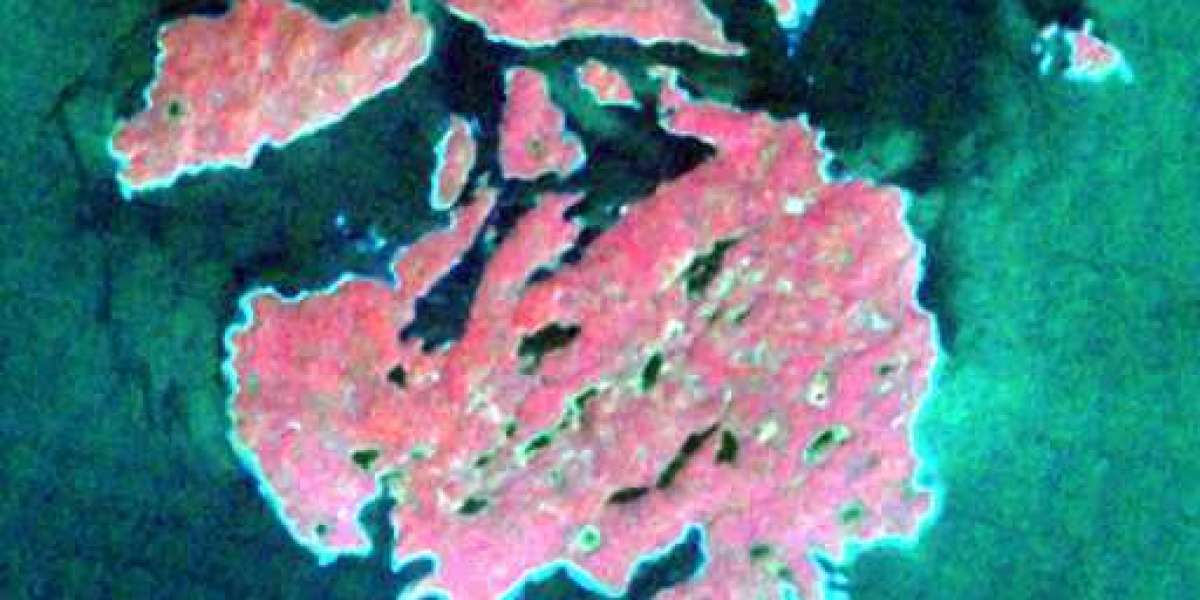Unbelievable as it may be, there is a group of islands in the Great Lakes that aren't from this world. The Slate Islands near the top of Lake Superior, south of Terrace Bay Ontario, are seventeen islands that many scientists believe to be the product of an impact crater.
A staff scientist at NASA's Lunar and Planetary Institute claims the meteor that created the Slate Islands was about 20 miles in diameter. Studies indicate that the asteroid entered 2 miles deep inside the earth and has a 30' wide shatter cone. Shatter cones are found around sites of nuclear explosions but are only about an inch deep. The shatter cone on Slate Island maybe the worlds largest! Traveling at up to 12 miles per second, it vaporized in a blast equal to more than one million tons of TNT. The atomic bomb dropped on Hiroshima generated the amount of energy of only 15 thousand tons of TNT.
The size and speed of this asteroid puts it in the category of a "dinosaur killer". Popular dinosaur extinction theories claim that the impact of a large asteroid caused a "nuclear winter" that wiped out most of the life on earth and caused the extinction of the dinosaurs. The theory claims that a single high velocity asteroid impact in an area now covered by the Gulf of Mexico was to blame. Estimates of the age of the Slate Island crater range from 350-450 million years old and the mass extinction of the dinosaurs is thought to have occurred around 65 million years ago. Given these age estimates, the Slate Island event happened well before the age of the dinosaurs (claimed to have begun around 200 million years ago).
Outside of the incredible destructive power of meteor impacts, there is the notion that extra-terrestrial life inside the meteor may survive the impact. If the debate surrounding the Martian meteorite found in Antarctica (known as # ALH84001) shows that ancient Martian microbes may have survived the trip, what if they had 450 million years to adapt to our environment. I can imagine such a science fiction scenario occurring on the Slate Islands. A remote and mysterious island, lost in time and space, harboring strange alien life forms hidden in unearthly caverns. Dangerous and forbidding, it lures adventurers and treasure hunters looking to exploit its vast riches.
Outside of harboring aliens, the rest of that last statement is basically true. The Slate Islands are remote, accessible only by plane or boat. The vast riches come not only in the form of gold and other precious minerals deposited by the meteorite, but in the knowledge gained from studying a large crater here on earth. Today it is part of the Provincial Park System of Canada and cannot be mined or exploited by adventurers but it can be visited for camping and fishing.












